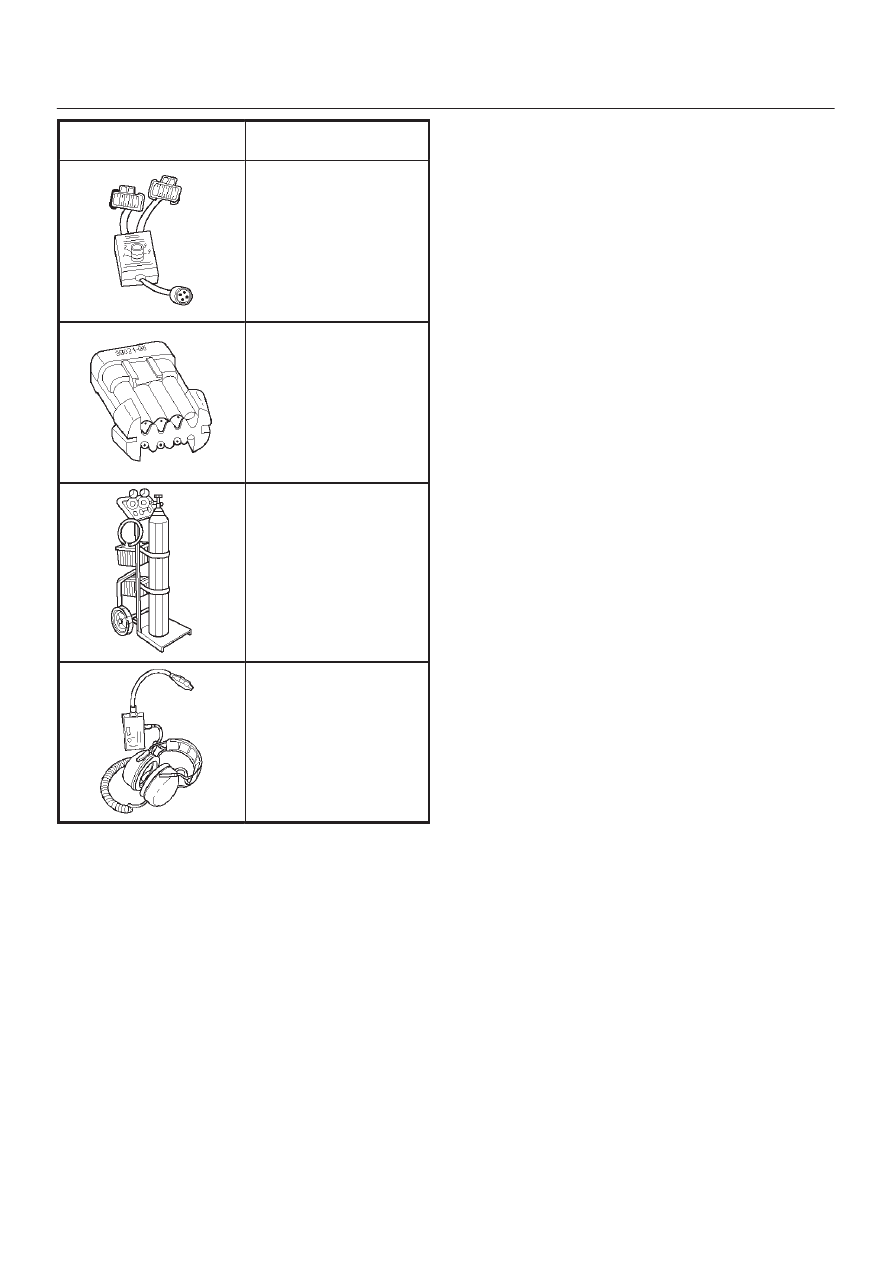Isuzu Amigo / Axiom / Trooper / Rodeo / VehiCross. Manual - part 887

6E–572
TROOPER 6VE1 3.5L ENGINE DRIVEABILITY AND EMISSIONS
ILLUSTRATION
TOOL NO.
TOOL NAME
J 39021-90
Injector Switch Box
J 39021-65
Injector Test Light
J 41413
!
EVAP Pressure/Purge
Diagnostic Station
J 41416
@
Ultrasonic Leak Detector
1. J 41413 EVAP Pressure/Purge Diagnostic Station is
a multipurpose tool which is used to perform several
diagnostic procedures for enhanced emission
testing. The station will accommodate a nitrogen gas
filled cylinder which is used to pressurize the vehicle
EVAP system for a leakdown test and leak location
test when a vehicle is repaired for leakage in the
enhanced evaporative emission control system. It
also has two additional gauges (inches of mercury
and inches of water) which are used to measure both
source vacuum and EVAP canister purge vacuum to
verify correct operation and vapor flow within the
canister purge circuit.
2. J 41416 Ultrasonic Leak Detector is a
microprocessor-based device used to detect leaks in
the enhanced evaporative emission control system.
The evaporative system is pressurized to 30 inches of
water using the J 41413 EVAP Pressure/Purge
Diagnostic System. Small leaks in the EVAP system
will emit sound at a high frequency undetectable by a
human ear but detectable with the J 41416. The
technician traces along the evaporative system and
can pinpoint leaks due to corroded lines, cracked
hoses, or a damaged EVAP component. The
detector includes a high quality set of headphones to
block out surrounding shop noise and the LED
sensitivity meter allows a visual reference for locating
leaks in conjunction with the audio output heard
through the headphones. Powered by (1) nine volt
battery.